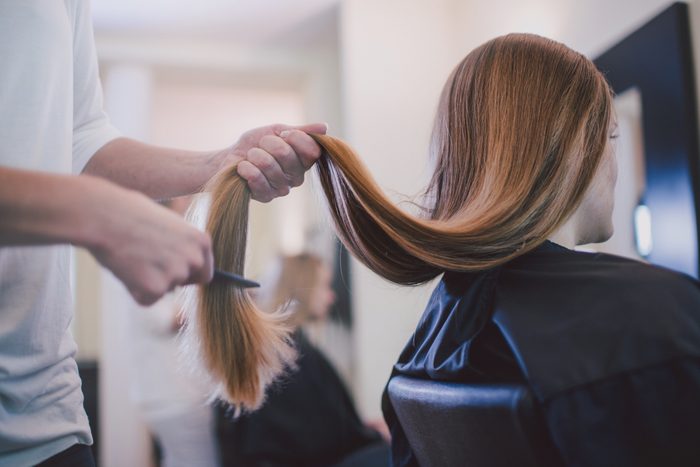
Myth busters
From how often hair should be trimmed to which styling techniques will prevent damage, there’s no shortage of hair-related myths floating around. Why do people fall for them? Because they seem logical. Some even have scientific-sounding backup…that’s completely made up! While no one likes to be fooled, the bigger problem is that these untruths can lead you to take actions that seriously damage your hair. To stop this vicious cycle, we spoke to the experts to get the real scoop. Get ready to relearn what you think you know about your hair—and get the gorgeous results you’ve been hoping for this whole time. While you’re at it, make sure to avoid these hairstyle mistakes that age your face.
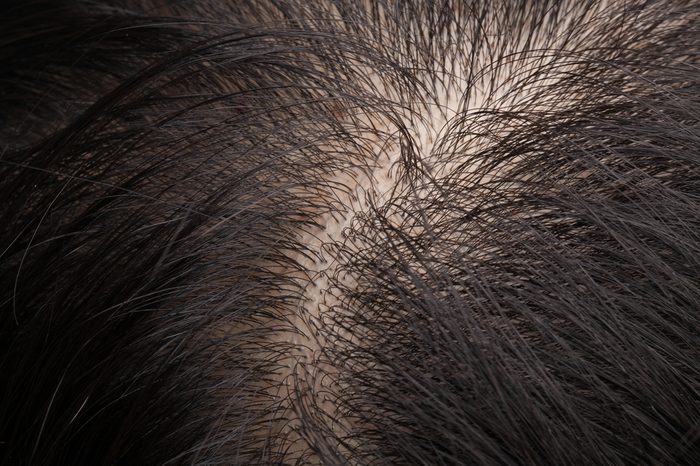
The dirtier your hair is, the faster it will grow
Some people assume that dirty hair grows faster—less washing and styling means fewer chances for breakage, right? Don’t skip showers in hopes of longer hair just yet; this is a silly myth that will only give you greasy locks and an unpleasant odor. According to Brenton Kane Diallo, celebrity hairstylist for clients like Gigi Hadid and Megan Fox, “hair is at its healthiest and strongest when it’s clean and conditioned. Not washing your scalp clogs your follicles, which can stop its growth.” Keep your follicles in top-top shape with Sunday Riley Clean Rinse Clarifying Scalp Serum. And try this Japanese beauty trick to make your hair grow faster.
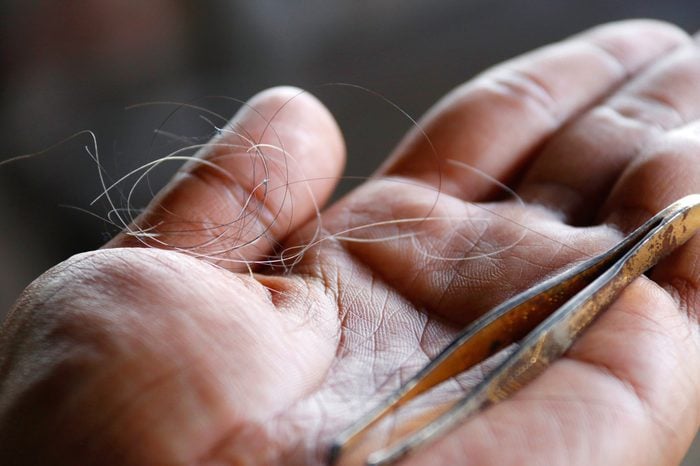
Plucking a gray hair makes more grow
If you’re reluctant to pluck a stray gray out of fear of gray-hair contagion, take comfort in this busted theory. Taylor Brock, expert stylist at Butterfly Studio Salon, tells Reader’s Digest that plucking a gray hair will not make two grow back in its place. But you should still put the tweezers down. “Plucking hair puts stress on the follicle and your scalp, and pulling a hair out can cause it to grow back with a courser texture and weird growth pattern.” Rita Hazan’s spray-on root concealer is an effective DIY option for temporarily hiding gray hairs in between salon appointments. Here are more of the best root touch-up kits on the market.
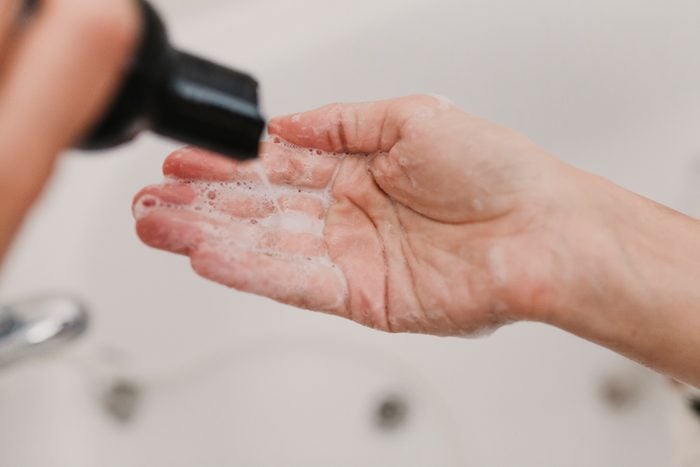
You should shampoo oily hair daily
While the job of a shampoo is to strip hair of unwanted dirt and oils, it’s easy to overdo it. Not knowing how often to wash your hair can make you turn to the suds every time your roots get slick. However, it is counterproductive because the amount of sebum your scalp produces doesn’t come close to the amount stripped out by shampoo sulfates. “Your body is a self-regulating machine and would likely overproduce oils to compensate for what was lost,” says De L’isle, owner of Happy Curls, Happy Girls. “Shampooing too much can lead to brittle hair and itchy scalp—among other things. Instead, take a look at your diet, [and] use light, water-based products.” Also, consider jojoba oil products. You might not immediately think of oil as the antidote for oily hair, but jojoba oil is great for helping regulate sebum production, she says. While you’re at it, check out these shampoos specifically made for oily hair.
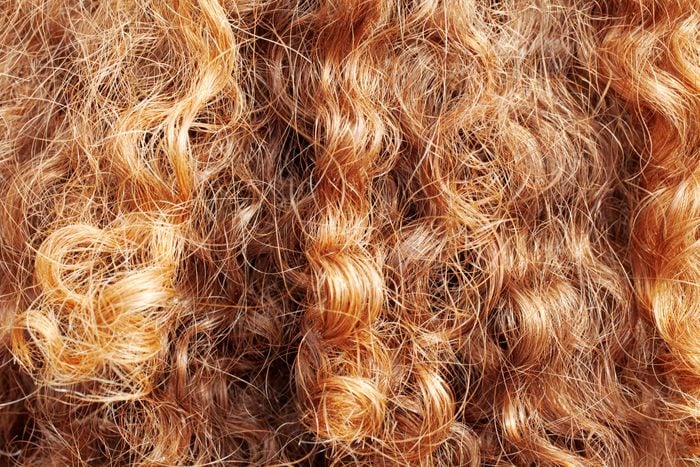
Only women of color have coarse hair textures
Coarse, tight, curly textures are not reserved for people with darker skin. In fact, an individual’s hair texture is much more connected to science than it is to skin tone. “Women of all backgrounds can have wavy, curly, coiled, and kinky hair genetics,” says Miko Branch, CEO of Miss Jessie’s, a product line dedicated to caring for curly textures. If you ignore your hair’s needs, it can lead to problems like lackluster hair, dry scalp, and breakage.
Maeva Heim, CEO of the hair-care company BREAD, explains that “maintaining moisture and hydration is definitely number one. More often than not, coarse hair textures suffer from dryness, so your routine should be centered around keeping your hair moisturized and lubricated.” She also advises recommends using a gentle shampoo. The Bread Supply Wash Kit contains a curated lineup of products specifically designed to nurture curly and coily hair textures.
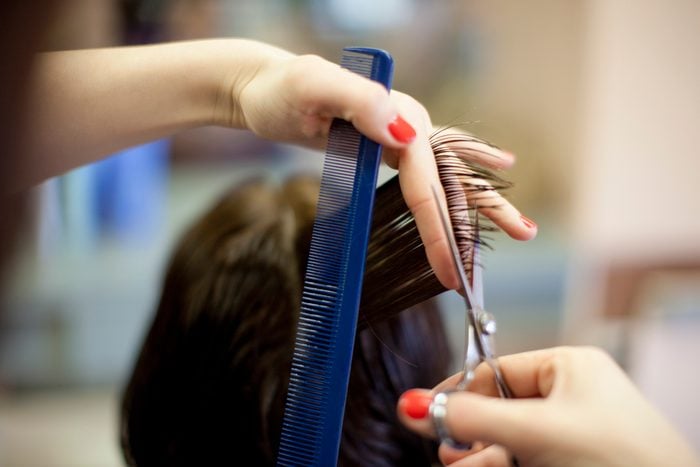
Trimming your hair makes it grow faster
Although scheduling your trim every four to six weeks helps ensure that your hair has minimal split ends, it doesn’t help it grow. Steve Lococo, master stylist and co-owner of B2V Salon, tells Reader’s Digest: “Lightly trimming the ends, also known as ‘dusting,’ will improve the texture and elasticity of the hair by preventing split ends from growing up the hair shaft.” In other words, don’t let this busted myth discourage you from regular salon visits; the extra bucks spent are well worth it if you want healthy-looking, shiny hair. Don’t miss these other golden rules everyone with long hair should commit to memory right now.
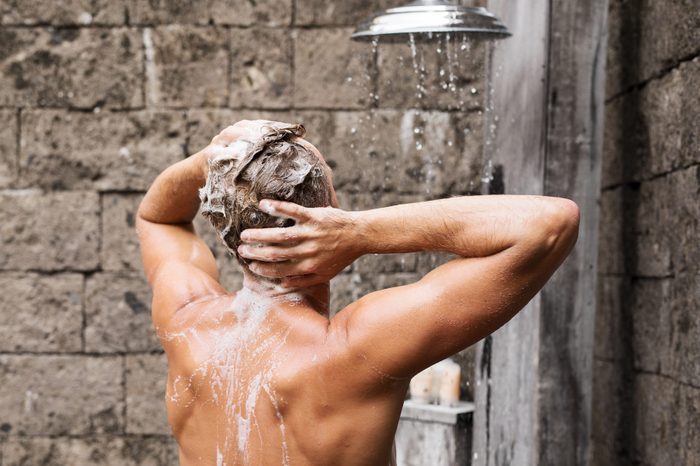
Shampoos stop working after a while
This myth stems from the idea that your hair will “get used to” a product and it will stop working. But there’s little evidence to support that. In fact, Katy Walsh of Martial Vivot Salon Pour Hommes says switching shampoos too often can actually make things worse. “Your PH balance will be off, and that can cause problems like a dry scalp and hair breakage from lack of moisture,” she explains. Here are other hair-washing mistakes you’ll want to avoid.
There are instances, however, where it does make sense to seek out something new. “If you recently made a change, such as coloring or using hot tools frequently, you might want to switch to a more hydrating shampoo,” celebrity stylist Kim Vo points out to Today.com. Moroccan Oil Hydrating Shampoo nurtures hair with antioxidant-rich argan oil.
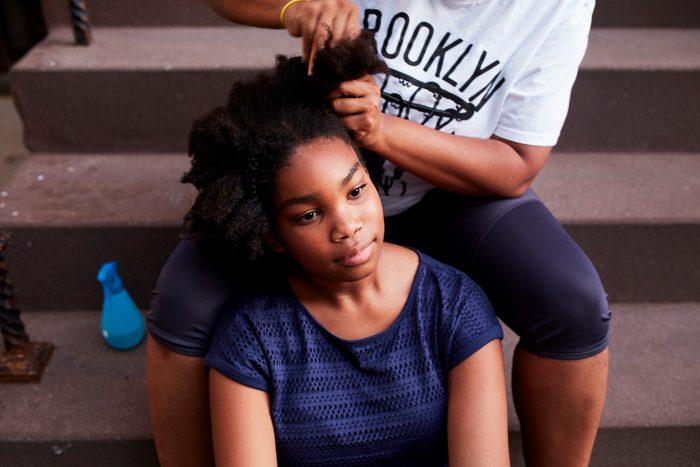
Black hair is stronger than Caucasian hair
Things aren’t always as they seem—or in the case of hair textures, as they feel. Though coarse Black hair may feel tougher to the touch and appear thicker, the opposite is actually true. As Dr. Rolanda Wilkerson, senior beauty scientist for Proctor and Gamble, explained to StyleCaster, “a textured hair strand has uplifted cuticles at every place where the hair curves. Textured African ancestry hair can be fragile and feel dry as a result…and naturally more porous than naturally straight hair.”
The danger? You might think that your hair can withstand more heat and styling-related manipulation than it actually can. “Assuming your hair is strong means you’re more likely to damage it, because you assume the hair can take it,” warns Heim. “This can lead to major hair damage, hair breakage, and sometimes, in more serious cases, things like traction alopecia.” Products that focus on hydrating and conditioning, are easy to spread, and keep hair maintained for longer are always best. The BREAD Hair Mask is one great option.
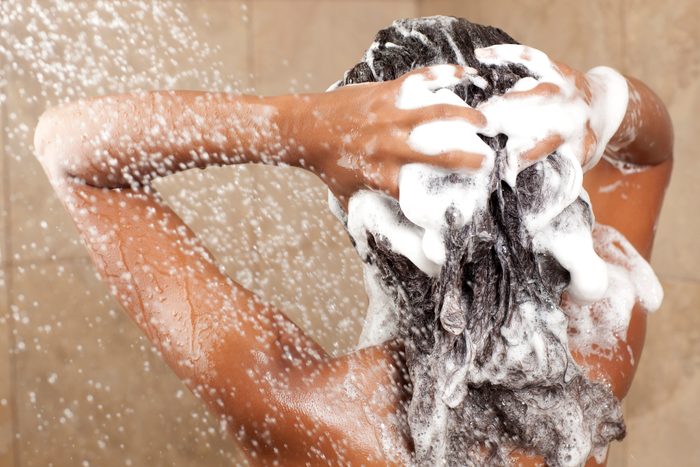
The more shampoo suds, the better
While bubbles are always fun, foaming action isn’t a sign that your shampoo is working overtime. In fact, bubbles are a by-product of harsh detergents in sulfate shampoos, which can strip hair of necessary oils and nutrients. “Although we’ve trained ourselves to think that the more bubbles there are, the deeper the cleanse, it’s just not true,” says Devin Graciano, global hair educator and founder of Use Me. “Suds have no cleansing effects.” That said, it’s definitely a good idea to choose the right shampoo for your hair type.
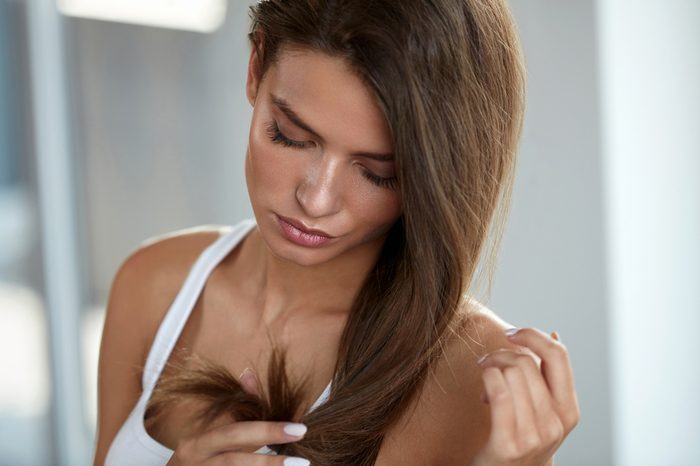
Split ends can be repaired
The sad truth is, once the ends of hair have split, there’s no way to put them back together. “The key to split-end management is to prevent them in the first place and get regular trims to snip them off,” says Ashley Feinberg, founder and CEO of Kavella Hair Care.
Angelo David, owner of the Angelo David Salon in New York City, adds that you can prevent split ends by avoiding hot tools as much as possible, getting your hair trimmed every six to eight weeks, and using a brush for wet and dry hair. Here’s another pro hair tip: “When brushing your hair, start from the ends, then work your way up the hair shaft, as opposed to brushing from the roots down to the ends.” He recommends the Flex Brush to mitigate split ends at home. By the way—if your hair tends to get frizzy, you have to check out these game-changing frizzy hair products.
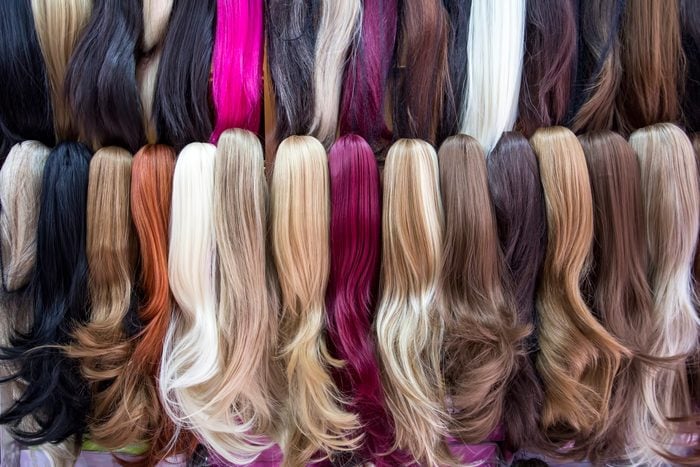
Weaves and wigs prevent hair damage
Wigs and weaves are considered “protective styles,” especially in the Black community, because your natural hair is typically covered by the purchased hair and therefore kept under wraps, avoiding harsh styling techniques. In theory, wearing wigs and weaves should give your hair a break from styling-related wear and tear, but in reality, there’s more to the story. While you need a secure fit for weaves and wigs to look natural, too tight is never right. Karen Mitchel, owner of True Indian Hair, points out that “tight braids under extensions or wig units that are too tight can cause hair loss and breakage around your hairline, resulting in traction alopecia.”
Neglect is also an issue for hair covered by weaves and wigs. Natural hair left unattended can suffer from the same, if not more, damage from tangling, dryness, and breakage. Personally, Mitchel, an avid wearer of wigs and weaves, moisturizes and massages her own scalp two to three times a week with a scalp oil. The essential oils in Moroccan Oil Oily Scalp Treatment help to moisturize the scalp and control itchiness.
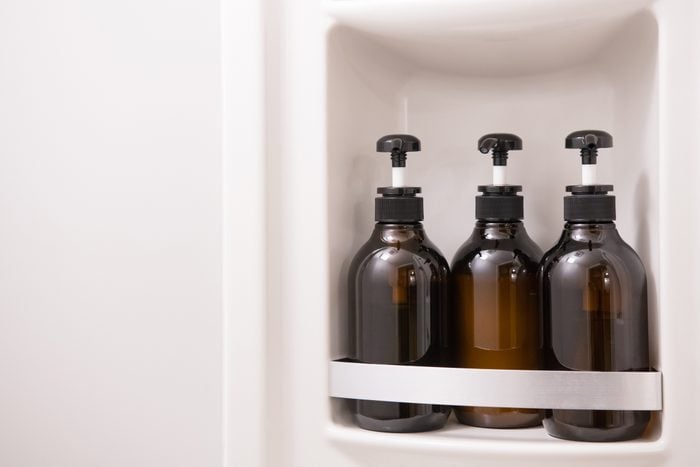
Silicones are harmful to hair
You may try to avoid hair products that contain silicones, like shampoos or smoothing serums, because you think they’ll weigh down your hair, but Labrecque notes that “they can actually be helpful, when used correctly, with adding shine and increasing moisture retention.” Silicone can also assist with the longevity of your beloved blowout. In fact, Labrecque depends on silicone styling products to smooth out and eliminate frizz from a fresh blow-dry. However, moderation is key with silicone products: He advises rubbing no more than three drops in your hands to banish frizz and lock in luster. You should also check out this frizzy hair product with near-perfect reviews on Amazon.
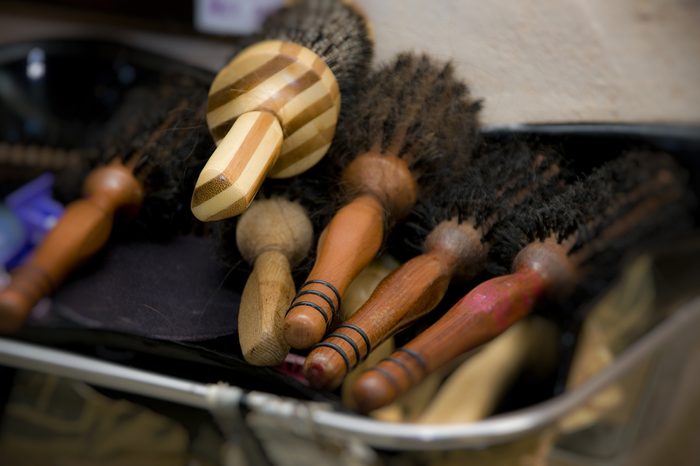
The more you brush your hair, the healthier it will be
Sorry, Mom. You don’t need to brush your hair 100 strokes a day for it to be healthy. In fact, Scott Yance, celebrity hairstylist and owner of Scottfree Salons, says excessive brushing may do more harm than good because it can damage your hair’s cuticle. “Brush your hair when it’s knotty, but leave it alone otherwise.” Surprised? You might also be making these super damaging combing mistakes.
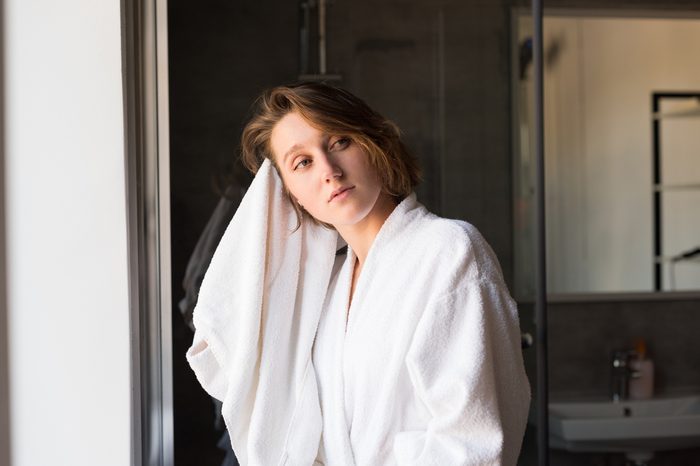
Towel-drying and air-drying is better than blow-drying
Although air-drying sounds good in theory, one study found that using a hairdryer at the right distance and temperature can actually cause less damage than air-drying. The science is pretty simple: When hair comes into contact with water, it swells. The longer it stays that way, the more pressure this puts on the delicate proteins that make up hair and the more opportunity there is for damage.
According to Jonathan Horowitz, researcher and ingredients expert for Maple Holistics, incorrect towel-drying is also harmful. “Truth is, towel-drying can be just as damaging as blow-drying, and sometimes more so, since the movements can be just as rough on your strands as intense heat,” he explains. “The key is to be gentle with the towel, and squeeze your hair with it rather than rub.” As a speedier alternative, blow-dry your hair on cool, keeping your arm fully extended, moving the blow-dryer around so you aren’t concentrating the air on one spot. Don’t miss these other secrets from hairstylists.
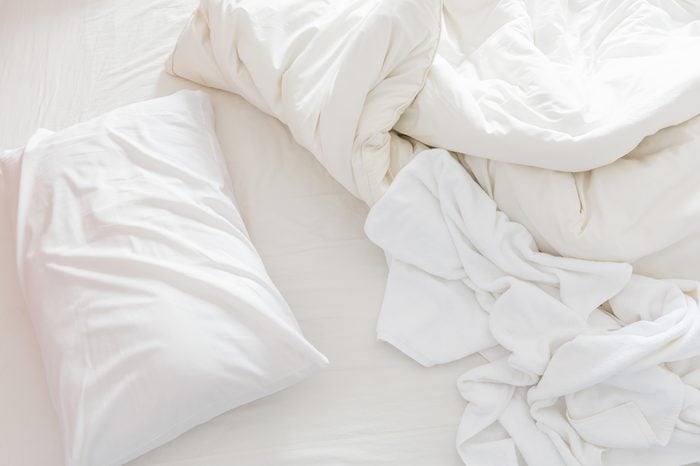
Going to bed with wet hair prevents damage
Do yourself a favor and dry your hair before hitting the hay. Not only can going to bed with wet locks leave you with a damp pillow, but it can also cause cuticle damage and a bad case of bedhead. “While most people think they’re going easy on their hair by letting it dry naturally and sleeping on it wet, you’re risking frizz and matting,” says Nunzio Saviano, owner of Nunzio Saviano Salon in New York City. “When the hair is wet, the cuticle is not completely sealed, so the friction of the pillow causes frizz.”
Another way to protect your strands while you slumber? “Use a silk or satin pillowcase to help lessen the friction on your hair,” advises David. Or cover your head with the Grace Eleyae Slap, a satin-lined sleep cap that protects hair and preserves your style. The Slap is just one of the Black-owned beauty products you really should own by now.
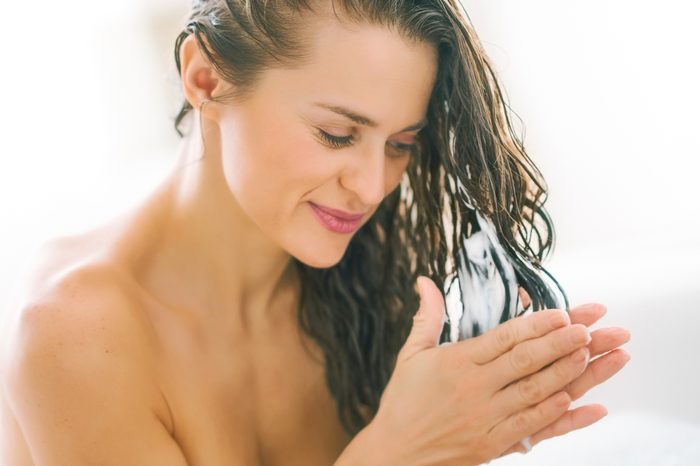
Make sure you rinse out all the conditioner
In fact, rinsing out all the conditioner until hair is squeaky clean defeats the purpose of conditioner and rinses away the nutrients you just applied. According to Doug Martucci, creative director at Prorituals, conditioner provides slip and protection to hair. If you’re worried about your hair feeling greasy after a shampoo, leave your scalp conditioner-free and just focus the product on the ends. You might also want to try a product like Acure Curiously Clarifying Conditioner, which will enrich strands without leaving any residue behind.
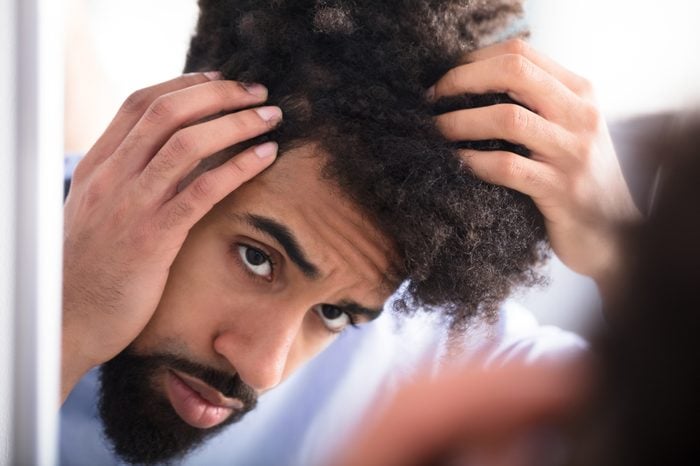
A flaky scalp means you have dandruff
Itchy scalp, white flakes? Don’t automatically assume a dandruff diagnosis. While you may feel an urge to reach for the Head & Shoulders, take a moment to assess. Dandruff shampoos can actually worsen flaking by drying out the scalp. “Flakes often indicate the need for moisture and some exfoliation, and can occur during seasonal changes in temperature,” notes Fred Connors, owner of FRED Salon in New York City. He recommends a DIY fix—an exfoliating scalp massage with conditioner mixed with a tablespoon of brown sugar. You can also exfoliate and ease itchiness with a scalp massager like the Heeta shampoo brush.
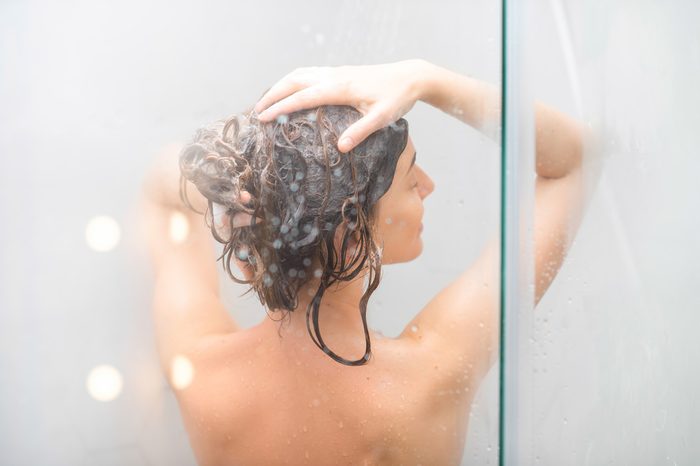
Frequent shampooing makes your hair fall out
Harsh shampoos can strip your hair of natural oils, but this doesn’t have any correlation with hair loss. In fact, not showering enough can lead to excessive oil production, which can damage the roots and lead to additional shedding. Sarah Lewis, salon manager at Supercuts, tells Reader’s Digest: “A lot of people think this myth is true because they see hair in their drain after a shower, but on average, it’s normal for a person to lose anywhere from 20 to 100 strands a day.” If hair loss is truly an issue, add Biotin Thickening Spray to your hair-care arsenal, or try these natural hair-loss remedies.
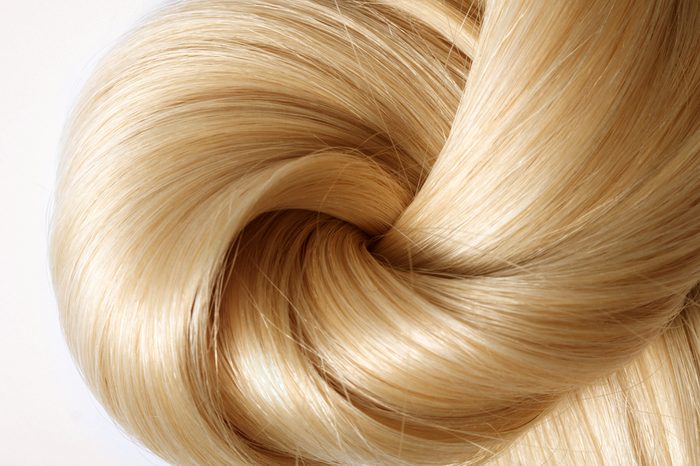
Rinsing your hair with cold water makes it shinier
According to a study by chemists at TRI Princeton, cold water has absolutely no impact on making hair look glossy. In the study, the researchers rinsed participants’ hair in water that was at least 98 degrees Fahrenheit (the hot group) or below 65 (the cold group). They found that the hair rinsed in cold water did not have any added shine. In fact, warm water was more successful at improving hair shine and removing residue buildup. Although Lococo agrees, he says that you shouldn’t turn off the cold-water faucet entirely—there is still one benefit: “A cold-water rinse closes down the pores on your scalp.”
